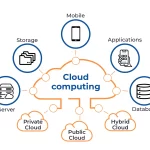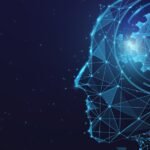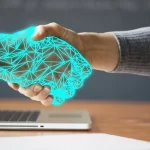An Overview of Machine Learning
Machine learning has emerged as a transformative technology that has revolutionized the way we process and interpret data. By leveraging algorithms and computational models, machines can learn from patterns and make predictions without being explicitly programmed. In this blog post, we will provide an overview of machine learning, explore its key components, and understand its diverse applications across various domains.
- Understanding Machine Learning: Machine learning is a subset of artificial intelligence (AI) that focuses on developing algorithms and models that allow computers to learn and improve their performance over time. It enables machines to automatically identify patterns, make predictions, or perform tasks based on experiences and data without human intervention.
- Key Components of Machine Learning: a. Data: Machine learning heavily relies on data. It requires large and relevant datasets for training and learning purposes. The quality, diversity, and representativeness of the data significantly influence the performance and accuracy of machine learning models.
b. Algorithms: Machine learning algorithms form the heart of the process. These algorithms enable machines to analyze data, extract patterns, and make predictions or decisions. They can be classified into three main types: supervised learning, unsupervised learning, and reinforcement learning, each serving different purposes and applications.
- Supervised Learning: In supervised learning, the algorithm is trained on labeled data, where the desired output or target is known. The algorithm learns to associate input data with corresponding output labels, enabling it to make predictions on new, unseen data.
- Unsupervised Learning: Unsupervised learning deals with unlabeled data, where the algorithm aims to find patterns, relationships, or structures within the data without any predefined output. It helps discover hidden insights or groupings within the data.
- Reinforcement Learning: Reinforcement learning involves an agent learning through interaction with an environment. The agent receives feedback in the form of rewards or penalties based on its actions, allowing it to learn optimal behaviors or strategies.
c. Model Training and Evaluation: Machine learning models undergo a training phase where they learn from data. During this phase, the model is exposed to labeled or unlabeled data, and it adjusts its internal parameters to improve its performance. The model’s effectiveness is evaluated using various metrics, such as accuracy, precision, recall, and F1 score, to assess its predictive capabilities and generalizability.
d. Feature Extraction: Feature extraction involves selecting or engineering relevant attributes or features from the input data that are most informative for the learning process. This step enhances the model’s ability to capture important patterns and relationships.
e. Model Deployment and Inference: Once the model is trained and evaluated, it can be deployed to make predictions or perform tasks on new, unseen data. This phase involves feeding new data to the model and obtaining output or predictions based on its learned patterns and associations.
- Applications of Machine Learning: Machine learning has found applications in a wide range of fields, revolutionizing various industries:
- Healthcare: Machine learning aids in disease diagnosis, personalized medicine, drug discovery, and patient monitoring, improving healthcare outcomes.
- Finance: Machine learning enables fraud detection, risk assessment, algorithmic trading, and credit scoring, enhancing financial decision-making and security.
- E-commerce and Marketing: Machine learning powers recommendation systems, customer segmentation, demand forecasting, and personalized marketing, driving sales and customer satisfaction.
- Autonomous Systems: Machine learning plays a crucial role in developing self-driving cars, drones, and robotics, enabling them to perceive the environment, make decisions, and adapt in real-time.
- Natural Language Processing: Machine learning enhances language understanding, sentiment analysis, chatbots, and voice assistants, improving human-computer interactions.
- Image and Speech Recognition: Machine learning algorithms power image and speech recognition systems, enabling applications such as facial recognition, object detection, and speech-to-text translation.


































